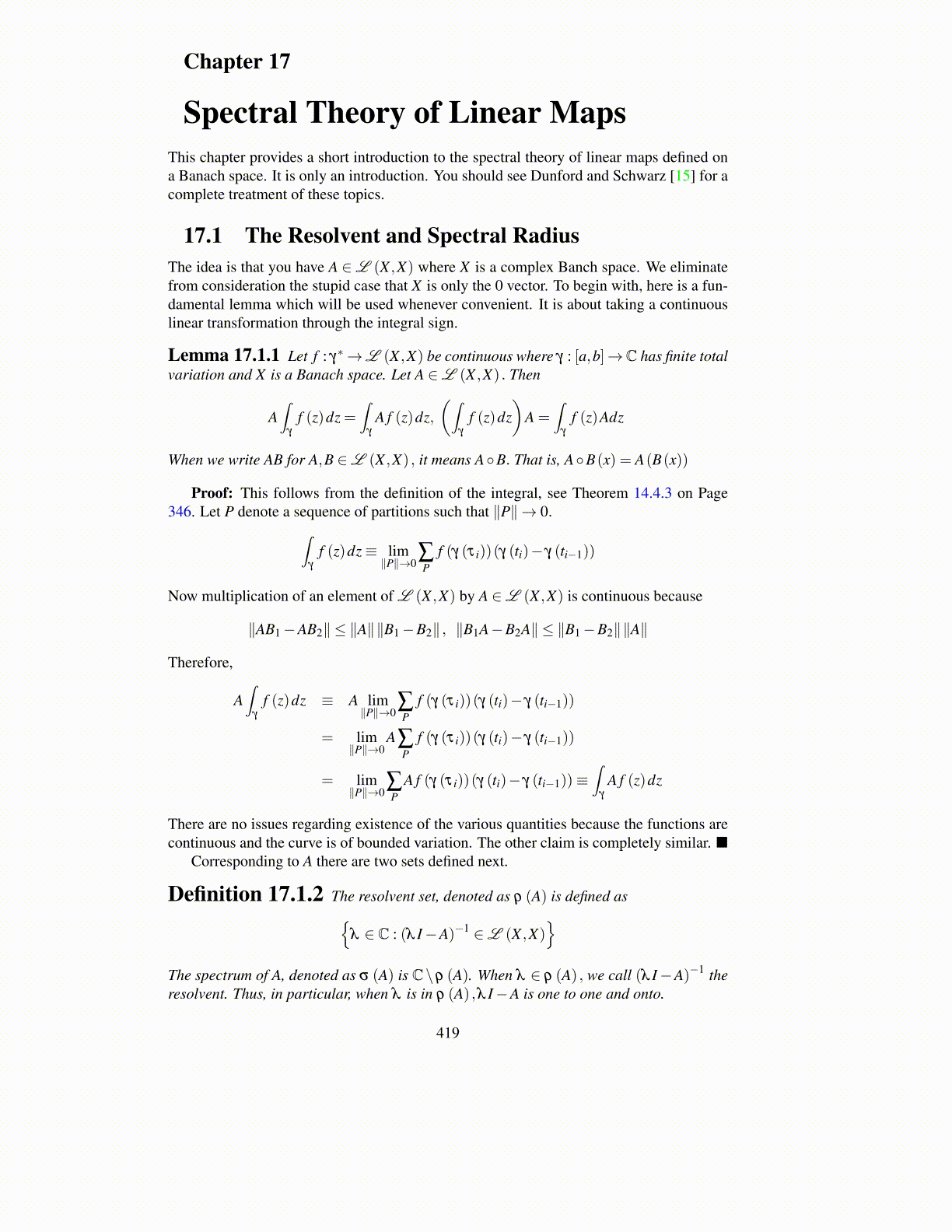
Chapter 17
Spectral Theory of Linear MapsThis chapter provides a short introduction to the spectral theory of linear maps defined ona Banach space. It is only an introduction. You should see Dunford and Schwarz [15] for acomplete treatment of these topics.
17.1 The Resolvent and Spectral RadiusThe idea is that you have A ∈L (X ,X) where X is a complex Banch space. We eliminatefrom consideration the stupid case that X is only the 0 vector. To begin with, here is a fun-damental lemma which will be used whenever convenient. It is about taking a continuouslinear transformation through the integral sign.
Lemma 17.1.1 Let f : γ∗→L (X ,X) be continuous where γ : [a,b]→C has finite totalvariation and X is a Banach space. Let A ∈L (X ,X) . Then
A∫
γ
f (z)dz =∫
γ
A f (z)dz,(∫
γ
f (z)dz)
A =∫
γ
f (z)Adz
When we write AB for A,B ∈L (X ,X) , it means A◦B. That is, A◦B(x) = A(B(x))
Proof: This follows from the definition of the integral, see Theorem 14.4.3 on Page346. Let P denote a sequence of partitions such that ∥P∥→ 0.∫
γ
f (z)dz≡ lim∥P∥→0
∑P
f (γ (τ i))(γ (ti)− γ (ti−1))
Now multiplication of an element of L (X ,X) by A ∈L (X ,X) is continuous because
∥AB1−AB2∥ ≤ ∥A∥∥B1−B2∥ , ∥B1A−B2A∥ ≤ ∥B1−B2∥∥A∥
Therefore,
A∫
γ
f (z)dz ≡ A lim∥P∥→0
∑P
f (γ (τ i))(γ (ti)− γ (ti−1))
= lim∥P∥→0
A∑P
f (γ (τ i))(γ (ti)− γ (ti−1))
= lim∥P∥→0
∑P
A f (γ (τ i))(γ (ti)− γ (ti−1))≡∫
γ
A f (z)dz
There are no issues regarding existence of the various quantities because the functions arecontinuous and the curve is of bounded variation. The other claim is completely similar. ■
Corresponding to A there are two sets defined next.
Definition 17.1.2 The resolvent set, denoted as ρ (A) is defined as{λ ∈ C : (λ I−A)−1 ∈L (X ,X)
}The spectrum of A, denoted as σ (A) is C\ρ (A). When λ ∈ ρ (A) , we call (λ I−A)−1 theresolvent. Thus, in particular, when λ is in ρ (A) ,λ I−A is one to one and onto.
419